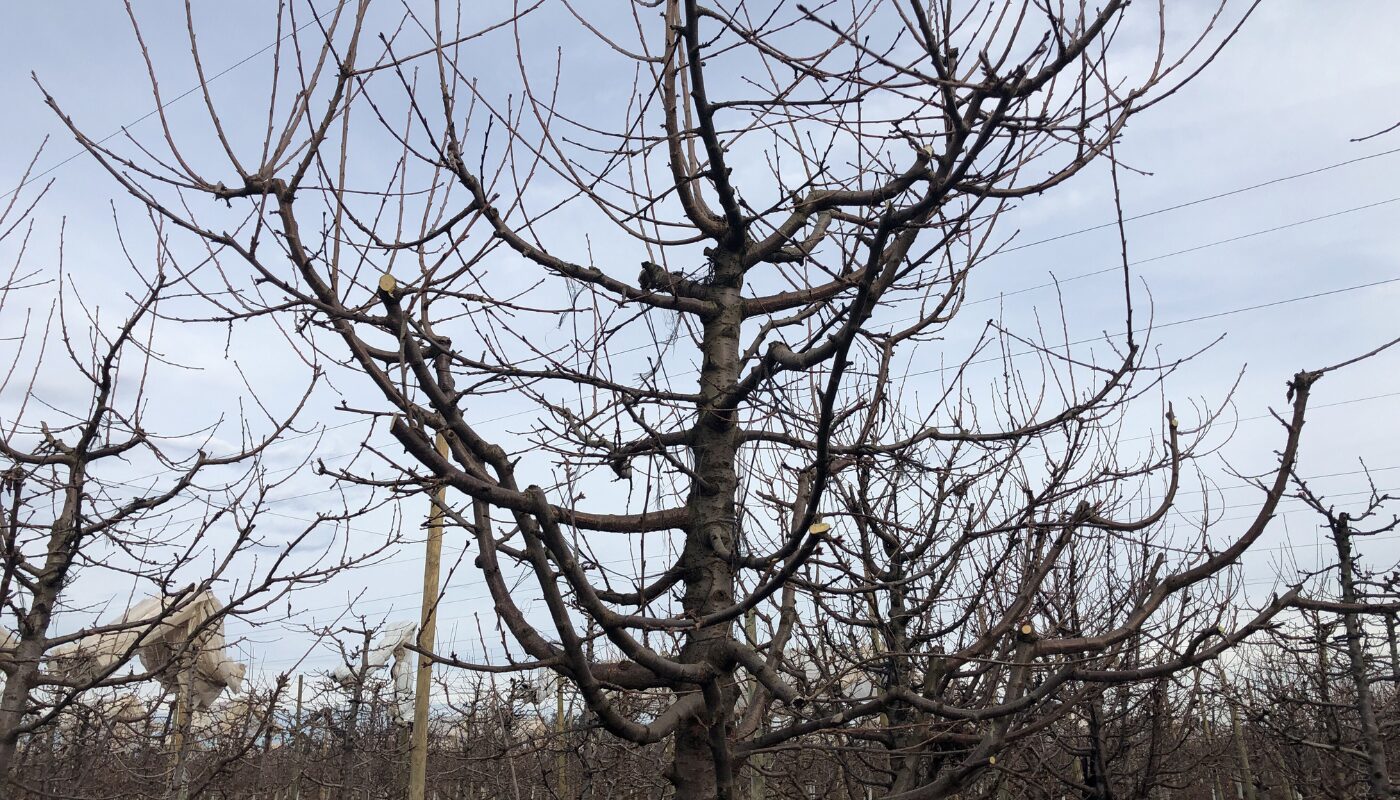An orchard recovery strategy that has given good results to some growers is the systematic elimination of all branches on one side of the plant, through a more intense winter pruning.
The key to carrying out this strategy is to prune one of the faces of the trees, trying to leave a kind of “stub” of branches of around 30 cm in length. The other side should receive a gentler pruning, eliminating only those most vigorous and useless structures to compensate for the elimination of half of the productive volume of the tree.
The objective of this type of winter pruning is that every time a branch is removed, its response is a renewal of at least 80 cm, in order to project it as a new productive branch into the future. In an orchard with a good loading potential, this unfortunately does not happen, due to shade and the same competition from the fruit. In other cases, in orchards with poor structure and with little supply of fruit centers and low production potential (6 tons/ha), this renovation is a quick option to improve the supply of fruit branches and centers and access better potential in the future.

Winter pruning can also be defined as dormant pruning and should be carried out from mid-May/November -depending on the hemisphere- until the day the first flower appears in the orchard. During this period, all the cuts made on the plant take on a condition of enhancing its vigor. If you want to eliminate a branch with a concept of structural renewal, it is important to eliminate it during dormancy, considering leaving an active point on the trunk.
From a commercial point of view, this intense pruning should be carried out in the first year on half of the planted area so that the total yield decreases by only 25%. However, in reality the drop in production is a little less, since the branches that are on the gently pruned side achieve a little more fruit.
In situations of high production, the elimination of a small percentage of the branches (1 to 3 branches per plant) does not have a satisfactory response in terms of structure renewal. However, when intense pruning is carried out, significant changes are seen in terms of renewal of the garden
To obtain positive results, it is recommended to perform this type of pruning alternating with 50% of the surface and always wait a season to perform the face of the axis that has not been renewed. Since it is a drastic strategy, the garden must be in appropriate conditions to be able to do it, it must be healthy and have appropriate light availability. If done correctly, after a few years you will have a completely new garden.










